Terry Teachout's Blog, page 68
July 17, 2013
TT: Almanac
H.L. Mencken, Notes on Democracy
TT: So you want to see a show?
Here's my list of recommended Broadway, off-Broadway, and out-of-town shows, updated weekly. In all cases, I gave these shows favorable reviews (if sometimes qualifiedly so) in The Wall Street Journal when they opened. For more information, click on the title.
BROADWAY:
• Annie (musical, G, nearly all performances sold out last week, reviewed here)
• Matilda (musical, G, all performances sold out last week, reviewed here)
• Once (musical, G/PG-13, nearly all performances sold out last week, reviewed here)
• The Trip to Bountiful (drama, G, extended through Oct. 9, reviewed here)
• Vanya and Sonia and Masha and Spike (comedy, PG-13, remounting of off-Broadway production, closes Aug. 25, most performances sold out last week, original production reviewed here)
OFF BROADWAY:
• Avenue Q (musical, R, adult subject matter and one show-stopping scene of puppet-on-puppet sex, reviewed here)
• The Fantasticks (musical, G, suitable for children capable of enjoying a love story, reviewed here)
IN CHICAGO:
• Big Lake Big City (comedy, PG-13/R, completely unsuitable for children, extended through Aug. 25, reviewed here)
CLOSING SOON ON BROADWAY:
• The Nance (play with music, PG-13, closes Aug. 11, reviewed here)
CLOSING SOON OFF BROADWAY:
• The Weir (drama, PG-13, closes Aug. 4, reviewed here)
CLOSING SOON IN GLENCOE, ILL.:
• The Liar (comedy, PG-13, extended through Aug. 11, reviewed here)
CLOSING NEXT WEEK OFF BROADWAY:
• A Picture of Autumn (drama, G, too serious for children, closes July 27, reviewed here)
CLOSING NEXT WEEK IN MADISON, N.J.:
• Fallen Angels (comedy, PG-13, closes July 28, reviewed here)
CLOSING SUNDAY IN CHICAGO:
• Tartuffe (comedy, PG-13, reviewed here)
TT: Solo flight (II)
 From San Francisco I flew north to Ashland, the arty mountain resort that is the home of the
Oregon Shakespeare Festival
and a place of which I've been enormously fond ever since I first came here in 2006 to see shows.
From San Francisco I flew north to Ashland, the arty mountain resort that is the home of the
Oregon Shakespeare Festival
and a place of which I've been enormously fond ever since I first came here in 2006 to see shows.My oft-expressed fondness, to be sure, has always been tempered with a touch of skepticism , for Ashland, like San Francisco, is not quite my kind of town. To the outsider it looks like a Disney-neat, lily-white community peopled by well-heeled tourists, well-off retirees, and the exceedingly nice people who wait on them, leavened by a light sprinkling of superannuated hippies.
If such is your thing, you'll love Ashland, and even if it isn't, you'll likely find the town to be pretty as a picture (it actually has a street whose official name is Scenic Drive) and hard to resist. You can eat well there, which I did , and I've testified repeatedly in The Wall Street Journal to the consistent seriousness and high quality of the shows put on by the Oregon Shakespeare Festival (I saw three this year).
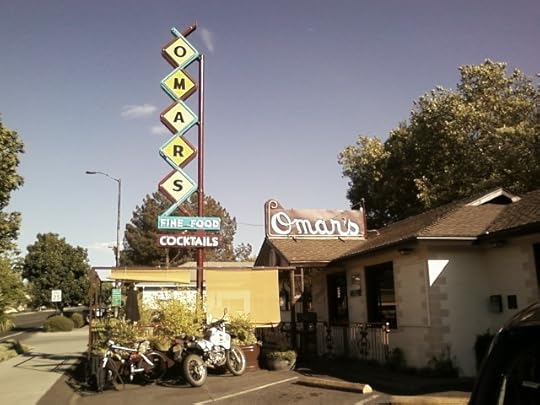 All that said, I can no more imagine moving to Ashland than to San Francisco, perhaps because I've never succeeded in scratching its surface. I don't doubt that it's a more complicated place than this bald description suggests, and it might be that closer acquaintance would make it more attractive to me. It wasn't until I peeled off from the center of town and dined at
Omar's
, a roadside steakhouse which claims to be the oldest restaurant in Ashland, that I felt I'd gotten anything remotely approaching a glimpse of the way the locals live.
All that said, I can no more imagine moving to Ashland than to San Francisco, perhaps because I've never succeeded in scratching its surface. I don't doubt that it's a more complicated place than this bald description suggests, and it might be that closer acquaintance would make it more attractive to me. It wasn't until I peeled off from the center of town and dined at
Omar's
, a roadside steakhouse which claims to be the oldest restaurant in Ashland, that I felt I'd gotten anything remotely approaching a glimpse of the way the locals live.Or maybe it's just that I happened this season to come to Ashland by myself, Mrs. T having decided not to brave the two-leg transcontinental flight that is the only way for New Yorkers to get there. The longer we live together, the less we like being apart.
Part of the problem, I suspect, is that theater is a social art, and it's been quite some time since I last saw three shows in a row without somebody I know well sitting next to me. For me, no small part of the fun of seeing a play is talking about it. I didn't get to do that this time around, or to share my excellent meals with a companion. Mrs. T says I'm simply not cut out to be a singleton , and now that I'm not one anymore, I guess she's right.
 Instead of seeking out the company of strangers, I kept to myself, got a considerable amount of writing done, and drove up to Mount Ashland on Sunday afternoon. When I first went there in 2009, I hiked to the top of the mountain, a
lunatic improvisation
that I undertook without preparation and for which I received a stern lecture from Mrs. T when I called her from the summit to brag about my derring-do. This time I was content to drive up to the ski area, dreaming of past glories all the way there and back.
Instead of seeking out the company of strangers, I kept to myself, got a considerable amount of writing done, and drove up to Mount Ashland on Sunday afternoon. When I first went there in 2009, I hiked to the top of the mountain, a
lunatic improvisation
that I undertook without preparation and for which I received a stern lecture from Mrs. T when I called her from the summit to brag about my derring-do. This time I was content to drive up to the ski area, dreaming of past glories all the way there and back.A solitary traveler treasures kind waitresses (thank you, Janell and Sascha, for taking such good care of me!) and quiet moments. Alone or not, there is much to be said for sitting in an outdoor hot tub at dusk, watching the moon set over the mountains and thinking of nothing in particular. Still, I was more than ready to hit the road when the time came for me to do so on Wednesday. It seems that the charms of Ashland aren't meant to be experienced alone--at least not by me.
(Second of three parts)
* * *
Emil Gilels plays Edvard Grieg's "Solitary Traveler," Op. 43/2:
July 16, 2013
TT: Snapshot
(This is the latest in a series of arts-related videos that appear in this space each Monday and Wednesday.)
TT: Almanac
John Gray, The Silence of Animals: On Progress and Other Modern Myths
Sites
LITBLOGS
Anecdotal Evidence
Books, Inq.
Bookslut
Ed Champion
A Commonplace Blog
Elegant Variation
Ivebeenreadinglately
Light Reading
The Little Professor
The Millions
The Mumpsimus
OMNIBLOGS
Gurgling Cod
karigee
Killin' time being lazy
Pratie Place
The Rat
Chloe Veltman
Whisky Prajer
SCREENBLOGS
Blogdanovich *
The House Next Door
Old-Time Radio Examiner
Pullquote
David Simon *
SIGHTBLOGS
Art Law Blog
Michael Barrier
Culturegrrl
Modern Art Notes
PrairieMod
Two Coats of Paint
Edward Winkleman
SOUNDBLOGS
John Amis
Stephen Hough
Iron Tongue
Ethan Iverson *
Jazz Lives
Jazz Profiles
JazzWax
On an Overgrown Path
Rifftides
Sandow
Think Denk
Villes Ville
Wonderful World of Satchmo
STAGEBLOGS
Broadway & Me
Chris Caggiano *
George Hunka *
Marissabidilla
Parabasis
Producer's Perspective
Shenton's View
John Simon *
The Wicked Stage
______________
ART LINKS
artsjournal.com
Arts & Letters Daily
BroadwayStars
______________
OTHER BLOGS
Alicublog
Althouse
InstaPundit
Kausfiles
Lileks
Lance Mannion
Megan McArdle
Mosaic
Overlawyered
RealClearPolitics
Via Meadia *
Volokh
______________
MEDIA
BuzzMachine
Romenesko
RADIO
Soundcheck
Studio 360
______________
USEFUL SITES
Criterion Collection
Hot Dogs
Inflation Calculator
Internet B'way DB
Internet Movie DB
Jazz on the Tube
Henry James Sites
Online Parallel Bible
OS Shakespeare
Paris Review DNA
samueljohnson.com
July 15, 2013
TT: Solo flight (I)
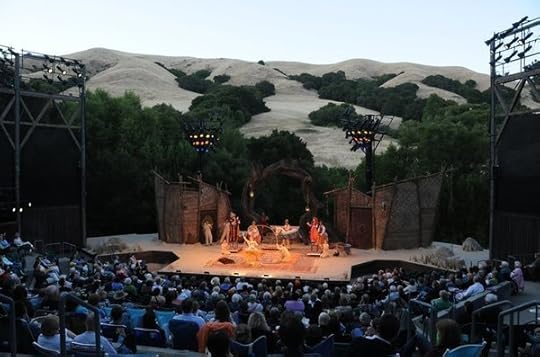 All this made me grateful--sort of--that Mrs. T decided to stay home instead of accompanying me to California and Oregon. I wouldn't have wanted to put her through a day like that. But no sooner did I extract myself from the hotel's hot tub and drive out to Orinda's California Shakespeare Theater on Wednesday to see
Romeo and Juliet
with a friend than I forgot all about my (admittedly minor) ordeal.
All this made me grateful--sort of--that Mrs. T decided to stay home instead of accompanying me to California and Oregon. I wouldn't have wanted to put her through a day like that. But no sooner did I extract myself from the hotel's hot tub and drive out to Orinda's California Shakespeare Theater on Wednesday to see
Romeo and Juliet
with a friend than I forgot all about my (admittedly minor) ordeal.While outdoor theater is sometimes more of a nuisance than it's worth, Cal Shakes, a five-hundred-forty-five-seat amphitheater located atop a hill not far from the city, is one of America's most idyllic performing spaces. Seeing a play there can take you out of yourself faster than just about anything I know, and that's exactly what happened to me.
Alas, I never seem to know what time it is when I'm on the West Coast, which I proved anew by forgetting that Romeo and Juliet started at seven-thirty, not eight. Being the compulsively early type, I pulled into the parking lot at seven-thirty-five, noticed at once that nobody else was doing the same thing, and hastened shamefacedly to the box office, where I discovered, entirely to my surprise, that the curtain was being held for my friend and me. We sat down and the show started at once. Sometimes it's good to be Guffman.
I took Thursday off and went to the de Young Museum to see Richard Diebenkorn: The Berkeley Years, 1953-1966 , a very important exhibition of some 130-odd paintings and drawings that, not altogether surprisingly, won't be traveling to New York, or anywhere else other than the Palm Springs Art Museum. Diebenkorn, who died in 1993, was one of this country's greatest painters, but his greatness has yet to be universally acknowledged, and I suspect that one reason for this failure of perception is that he was a West Coast artist who spent most of his adult life in California, at a time when New York City was universally regarded as the creative center of American art. When it comes to art, the East Coast has always had trouble taking the West Coast seriously, just as New Yorkers are reluctant to admit that theater in Chicago is at least as good as theater in Manhattan. It's one of the many ways we have of being provincial.
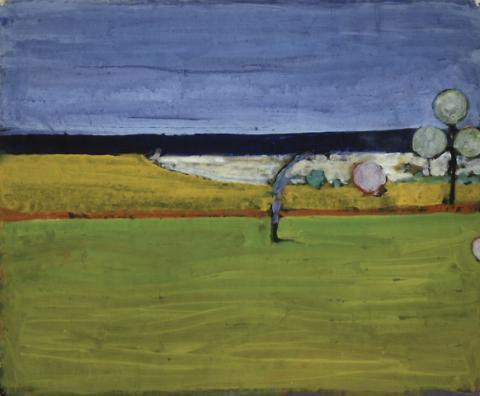 It happens that Mrs. T and I saw another first-class Diebenkorn show, "Richard Diebenkorn: The Ocean Park Years," on our last visit to California. I
wrote
about it not long afterward in The Wall Street Journal. Here's part of what I said:
It happens that Mrs. T and I saw another first-class Diebenkorn show, "Richard Diebenkorn: The Ocean Park Years," on our last visit to California. I
wrote
about it not long afterward in The Wall Street Journal. Here's part of what I said:Mr. Diebenkorn, who died in 1993, waged a lifelong "battle" with abstraction. He started out as a gifted Abstract Expressionist painter. In 1955 he suddenly embraced representation, turning out dozens of figurative paintings that translate the language of Matisse into a wholly personal, semiabstract style. Then, in the Ocean Park series, he made a decisive return to total abstraction, in the process creating the most original works of his career.
To chart Mr. Diebenkorn's stylistic development is to be reminded of the near-overwhelming power of the idea of abstraction in the 20th century. It was even felt by artists who, like Pierre Bonnard and Fairfield Porter, never produced an abstract painting in their lives, but were nonetheless influenced by the way in which practitioners of abstraction created what Mr. Diebenkorn called "invented landscapes," nonobjective images that evoked the world of tangible reality while steering clear of literal representation....
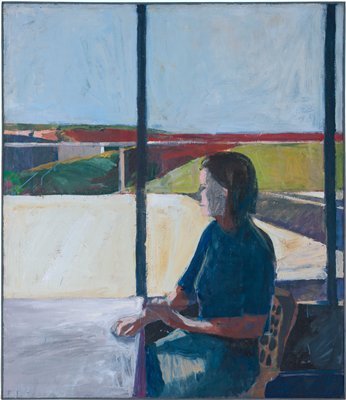 The Berkeley Years covers the second phase of Diebenkorn's development. Most of the paintings in the show are representational, and most of the best ones are landscapes in which the human figure is either absent or secondary. Even when Diebenkorn painted a person--almost always a woman--he tended to be shy about showing her face. I wonder whether this detachment might have contributed further to the fact that he has never been as popular as he ought to be.
The Berkeley Years covers the second phase of Diebenkorn's development. Most of the paintings in the show are representational, and most of the best ones are landscapes in which the human figure is either absent or secondary. Even when Diebenkorn painted a person--almost always a woman--he tended to be shy about showing her face. I wonder whether this detachment might have contributed further to the fact that he has never been as popular as he ought to be.In any case, The Berkeley Years is an incredibly rich and soul-satisfying show, defective only in the decision of the curator not to hang any of Diebenkorn's prints (he was, as Mrs. T and I have reason to know, a master printmaker). In every other way, the range and force of his prodigious output are displayed with discernment, and if you can't get out to San Francisco or Palm Springs to see it, the superlative catalogue will give you a clear idea of what you're missing.
 I love to visit San Francisco, though I don't think I'd ever want to live there. As much as I like fog, the perpetually damp climate doesn't suit my tastes. Neither does the city's comfortably hip vibe. It is, I incline to think, a place rather too pleased with itself for its own good--but, then, it has much to be pleased about, above all its near-unrivaled natural beauty. I never get tired of looking at San Francisco. And a city that can boast of a museum like the de Young (though the building is better than the collection it houses) or an orchestra like Michael Tilson Thomas' San Francisco Symphony needn't apologize to anybody about anything, culturally speaking.
I love to visit San Francisco, though I don't think I'd ever want to live there. As much as I like fog, the perpetually damp climate doesn't suit my tastes. Neither does the city's comfortably hip vibe. It is, I incline to think, a place rather too pleased with itself for its own good--but, then, it has much to be pleased about, above all its near-unrivaled natural beauty. I never get tired of looking at San Francisco. And a city that can boast of a museum like the de Young (though the building is better than the collection it houses) or an orchestra like Michael Tilson Thomas' San Francisco Symphony needn't apologize to anybody about anything, culturally speaking. (First of three parts)
TT: Almanac
John Gray, The Silence of Animals: On Progress and Other Modern Myths
July 14, 2013
TT: Living on line
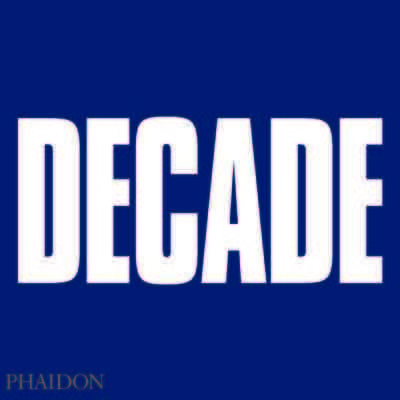 I started this blog on July 14, 2003, ten years ago. (
This
was the very first posting.)
I started this blog on July 14, 2003, ten years ago. (
This
was the very first posting.)Back then the word "blog" was still comparatively unfamiliar to the public at large, and there were, so far as I know, fewer than a dozen blogs that dealt solely or primarily with cultural matters, none of which was written by a critic who published regularly in the national media. Now there are far more than I can count.
Many, perhaps most of the artblogs that were launched in the early years of the twenty-first century have since fallen by the wayside, but "About Last Night" is still here. I've posted something--if only an almanac entry--every weekday for a decade. Sometimes it's a burden, but mostly it's a pleasure.
I tip my hat to Laura "Our Girl" Demanski and Carrie Frye, both of whom have shared this space with me in the past, much to my delight. Of late, alas, they've become too busy to blog (Laura is editing a magazine and Carrie is writing a book). When and if their lives change, they'll be welcome back, and then some.
I don't feel like going on at length about the tenth anniversary of "About Last Night" precisely because it is still here, a fixed point on the horizon of cyberspace. I do, however, want to point you to a few of my favorite postings. Some of them are about art, others about life, most about the intersection between the two. All are personal, most very much so. In time I hope to spin them, and others like them, into a book.
For the moment, though, I invite you to look back with me over a decade of uninterrupted blogging. I hope you've enjoyed the ride:
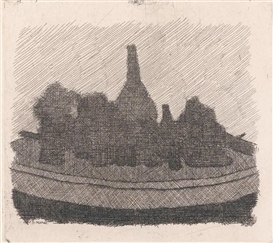 • From 2003:
Among the professionals
and
Kind of omnipresent
• From 2003:
Among the professionals
and
Kind of omnipresent
• From 2004: Nothing to do and A wedding
• From 2005: Time off for good behavior
• From 2006: In a strange land
• From 2007: Among the clouds and Sursum corda
 • From 2008:
Sacred to the memory
• From 2008:
Sacred to the memory
• From 2009: I shook hands with Piney Brown and How it felt
• From 2010: Lucky man and Night thoughts on Jack Benny
• From 2011: One is a wanderer and Time present and time past
• From 2012: Home from the sea and Beloved that pilgrimage
• From 2013: Blossoms in the breeze
TT: Just because
(This is the latest in a series of arts-related videos that appear in this space each Monday and Wednesday.)
Terry Teachout's Blog
- Terry Teachout's profile
- 45 followers



